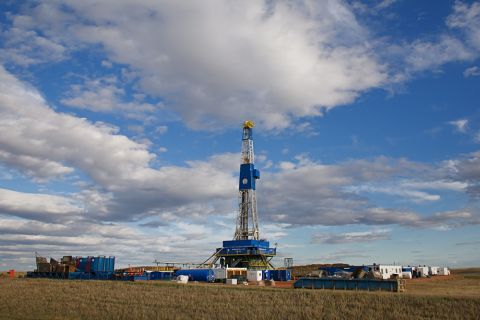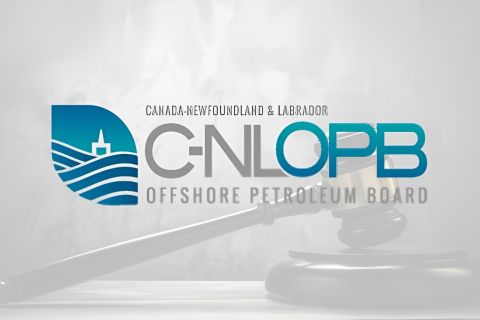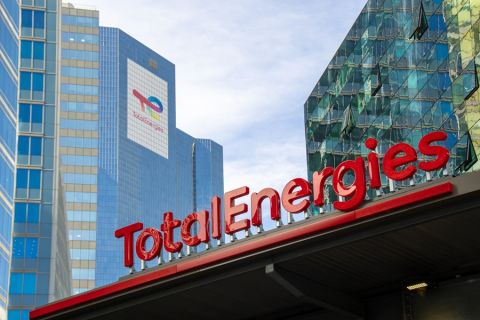Darren Barbee: My name is Darren Barbee and I'm the senior managing editor of Hart Energy. I'm here with Alan Smith, the CEO and president of Rockcliff Energy. Alan, I just wanted to start off by talking about the deal that you recently completed with TG Natural Resources (TGNR), and it was a big deal, $2.7 billion. Of course there was some ups and downs along the way. I don’t know if it felt like a roller coaster, but maybe you can talk about how that went.
Alan Smith, CEO and president, Rockcliff Energy: Sure. There is one thing that we have a hard time predicting in our business and that's commodity prices. As we had gotten the asset to the point where we felt like it was a potentially good time to begin thinking about an exit, the prices started running and we had the Russia, Ukraine war and the next thing you know, when our bids were due, we had $9 gas backwardated to about $5 gas and that is not an environment that most people want to try to figure out how to invest in and how to underwrite that. A couple of LNG-minded, longer-term players, we did begin to have conversations with them and ultimately got relatively close with TGNR at the end of 2022. But before we could get the transaction done, the prices moved away about as fast as they ran up and it just wasn't a good time for us to transact.
We had to get back on the bus as we told our team and we thought we were driving to El Paso, [Texas] but maybe it's California, we're not sure. They responded great and we kept doing what we were doing and ultimately the process stabilized in the fall. Some others actually came back during that timeframe too, but TGNR had a big advantage. They had done a lot of the work, and they were way down the road and they got to a number that was mutually agreeable too and we were able to get that thing across the finish line within the HSR window from the previous year. That's how close we got before, and they did a great job of executing and getting that thing done at the end of 2023.
DB: So talk a little bit about the foundational moments of your company and going across to the East Texas side of the Haynesville and the confidence that you had, from a geological standpoint, from an economic standpoint. And also you had a lot of clay content to deal with as I understand it.
AS: Being in a commodity business that's not lost on us, we're always trying to find ways to differentiate ourselves. We went in and thought we could acquire in the core of the Haynesville, which I would say you're kind of competing for obvious prizes. So we started begin to look to the West [Haynesville] and we did a lot of work and ultimately discovered that a lot of the rock attributes were very, very similar to North Louisiana. I think when you've looked at the thickness and the original gas in place and all that, it was maybe even better. The issue was the clay that you mentioned and could we get comfortable with that slightly higher clay content. We also recognized as we did all the work on East Texas side that most of the completions were 2010 vintage, so like 500 lbs/ft, 50 bbl/min, 500-foot stage spacing, so very different fracs from a modern frac.
We had a great execution team that we brought on board at Rockcliff and we had a lot of confidence that if we applied modern frac technology, that we would be able to crack the code, so to speak. And the thing you've heard us talk about before is that we knew the state line, which had been used as a geological barrier for a long time, we knew it had nothing to do with the subsurface geology. So we were able to do the geological work, apply the engineering knowledge and know-how from our guys having spent billions of dollars in the past, it was the Petrohawk team and we fortunately got it right.
DB: There has obviously been some deals here lately, including of course yours, that are on the gas side a lot and on the oil side, particularly in the Permian Basin. But I'm kind of curious about your view of M&A in the Haynesville and why you think that's important and crucial for particularly LNG.
AS: If you think about what's coming in the macro with the additional LNG getting built on the coast, you got Venture Global, you got Golden Pass. Those are very large facilities and they’re coming on probably in the next 18 months, full speed, so you're going to need a lot more gas. That's why there's pipes being built to the coast to be able to accommodate that. I think that when you think about the Marcellus [being] a bit gridlocked, the Permian can't get their gas to the Louisiana corridor as of yet, that means it has to come primarily from the Haynesville. We did some work a while back that we saw it in COVID-19, we saw it when prices ran up. That 20 rigs equals about two Bs of growth. So in this particular case, you could need three or four additional Bs, so how many more rigs is that going to take?
It's likely to come from the Haynesville. So how does that factor in M&A? I think there has already been quite a bit of consolidation. There are a lot of privates in the basin, but after you get past a couple at the top, like maybe an Aethon, then it's going to be kind of three yards on a cloud of dust. You're going to have to roll up a lot of companies to get to scale. The majors are already in there, some in bigger ways than others, and are there other ways to help them pull value forward through creative solutions that we've done before, [such as] joint ventures and things like that?
DB: I also wanted to ask about the Rockcliff III. I think it's on your official bio, but I don't know exactly what all that entails. So can you tell us as much as you can about what's going on with a third iteration of Rockcliff?
AS: Well, we've been doing this for a long time and depending on how you count them all from our chalkers to our Quantum resources down to Rockcliff, we were fortunate to participate in building a large midstream business, a mineral business. Where do we go from here? And does my role shift at all? We've got a great team, we've reserved the team and the plan is to move forward and hopefully pursue a Rockcliff III. I think that we always tend to be opportunistic, like as I mentioned in the panel here at DUG [GAS+ Conference and Expo] today, that we did look at the Delaware [Basin] before, so I wouldn't rule that out. Again, we've always said, and we haven't violated this, but we tend to focus on Texas and what touches Texas.
DB: Right. So the Delaware again?
AS: Maybe.
DB: That'd be interesting to see. Well, Alan, thank you so much. And for more energy intelligence, please visit hartenergy.com. And again, thanks very much to our guest Alan Smith.
AS: Thank you Darren.
Recommended Reading
M&A Spotlight Shifts from Permian to Bakken, Marcellus
2024-04-29 - Potential deals-in-waiting include the Bakken’s Grayson Mill Energy, EQT's remaining non-operated Marcellus portfolio and some Shell and BP assets in the Haynesville, Rystad said.
Chevron CEO: Permian, D-J Basin Production Fuels US Output Growth
2024-04-29 - Chevron continued to prioritize Permian Basin investment for new production and is seeing D-J Basin growth after closing its $6.3 billion acquisition of PDC Energy last year, CEO Mike Wirth said.
E&P Highlights: April 29, 2024
2024-04-29 - Here’s a roundup of the latest E&P headlines, including a new contract award and drilling technology.
C-NLOPB Issues Call for Bids in Eastern Newfoundland
2024-04-29 - Winners of the Call for Bids No. NL24-CFB01 will be selected based on the highest total of money the bidder commits to spend on exploration of a parcel during the first six years of a nine-year license.
TotalEnergies Eyes Suriname FID by Year-end 2024
2024-04-29 - France’s TotalEnergies and U.S. partner APA Corp. look to place their long lead orders ahead of a final investment decision related to their joint development offshore Suriname in Block 58.






